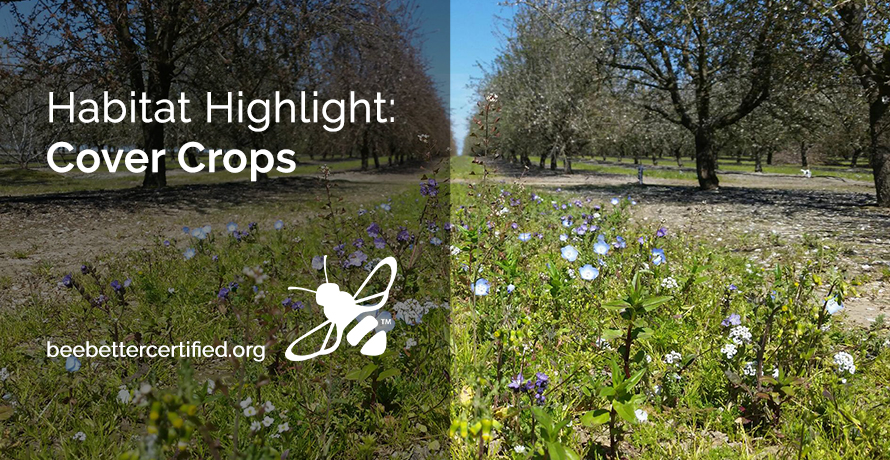Cover crops are gaining increased attention for their ability to benefit soil health while also supporting pollination and pest control services. They can be used for erosion control, for adding nitrogen and organic matter to the soil, and to suppress weeds. To best support pollinators, cover crops need to contain flowering species that are allowed to bloom before being incorporated into the soil as a “green manure”.
Cover crops can be planted in fields during winter or summer fallow periods, providing important early or late season flowers for bees when other food sources may be scarce. They can also be intercropped between crop rows, diversifying the farm and adding additional above- and below-ground resources for pollinators and other beneficial organisms.
Cover cropping strategies that benefit bees may include using plants such as clovers, phacelia, and buckwheat that can feed bees white also nurturing the soil or suppressing weeds. The economic benefits of using cover crops can be significant, and realized within one growing season in the form of a reduction in fertilizer costs, the addition of saleable product to otherwise unproductive areas, or as a means of providing forage for livestock.

This bumble bee is enjoying a cover crop of lacey phacelia planted at Villicus Farms in Havre, MT. Photo: Jennifer Hopwood / Xerces
From the Field: Casey Bailey, an organic grain, pulse, and beef farmer in Montana, is a cover crop innovator and enthusiast. By using a diverse crop and cover crop rotation, he has completely cut out all of his fertilizer inputs and his soil and cash crops are better for it. Casey varies which cover crop he plants in a given field based on weed pressure, soil conditions, and what he is planting next. For example, he plants sweet clover or alfalfa prior to oats because the oats thrive in the fields with the added nitrogen contributed by these legumes. In fact, Casey has noticed that oats grown in this way turn a color he has never seen before- vibrating deep green with the added nutrition. Casey also loves experimenting with different mixes. One mix he is trialing this year contains forage pea, flax, alfalfa, and barley, a mix which is very attractive to native pollinators. Sometimes he also includes deep-rooted radish and turnip to improve soil structure.
Casey is participating in our Bee Better Certified cover crop trials– a nationwide project to evaluate novel cover crop species or mixes, and strategies to incorporate these covers into different cropping systems. Stay tuned!
Where to plant: Cover crops are typically seeded into crop fields during fallow periods (before or after crops). They can also be seeded between crop rows (“intercropping”), or in the “understory” of growing crops.
Services provided: Soil Health: Pollination; Pest Control; Erosion Control; Nutrient cycling; Aesthetics; Educational Resource.
Additional information: Cover Cropping for Pollinators and Beneficial Insects: http://www.sare.org/Learning-Center/Bulletins/Cover-Cropping-for-Pollinators-and-Beneficial-Insects

